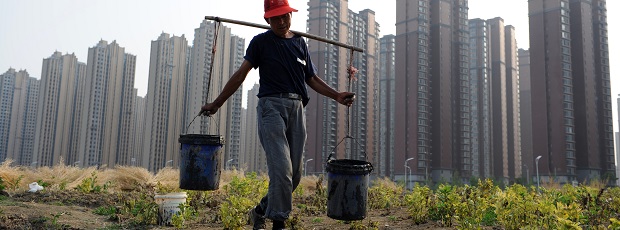08/21/2015
China / GDP

Increasing government spending can boost China’s growth in the short term. For more sustained growth, institutional reforms need to be implemented in tandem.
China has embarked on a wide range of reforms since Xi Jinping assumed leadership in 2013. This includes the relaxation of family planning policies, quickening the pace of interest rate and capital account reform, and the deregulation of utility prices, to name a few. Much has been done to better rationalise the “new normal” – to accept slower growth in exchange for higher quality and more sustainable growth in the longer term. Despite these reforms, the economy is slowing more than most had anticipated and outcomes are deviating substantially from targets.
In the first half of 2015, a series of interest rate and reserve requirement cuts fanned stock market euphoria and helped the financial sector add an estimated 1.6 percentage points to GDP growth. But with subsequent market collapse, a reassessment of monetary policy is in order.
Calls for more fiscal stimulus are intensifying. This is not surprising as expansionary fiscal policy in the past two decades has always lifted growth. There’s no reason why it wouldn’t succeed this time. But overcapacity and excess debt already plague the economy, so unless investment decisions are made with careful consideration to risk and return, further stimulus would only exacerbate those problems.
China is reportedly planning a new bond programme as large as 1 trillion Chinese yuan over three years to fund infrastructure projects. The fund raising process excludes local governments, which suggests that the central government wants to have broad control over spending. It is hoped that investments, which will be made through policy banks, would be more efficient and targeted to fit reform objectives. While this would clearly be an improvement over the past, centralising fund raising does not guarantee efficient investment. The effectiveness of fiscal stimulus will be enhanced only if institutional reforms are being sped up concurrently.
Institutional constraints are dampening the effectiveness of reforms on many fronts, ranging from urbanisation, to state-owned enterprise (SOE) reforms and fiscal reforms. The Chinese government has initiated reforms in all these areas over the past two years. Success, however, will require sweeping changes to the existing institutional framework.
Another lingering institutional challenge is the blurry distinction between the state and the market. While the initiative is supposed to infuse market elements into public finance, there is a tendency for the government to interfere with project operations. Private companies should be given leeway to operate projects with minimum government intervention. Meanwhile, the government’s key role should be to nurture a favourable institutional and administrative environment – one that safeguards investors’ interests and that clearly delineates the role of the government and the market.
Increasing government investment can lift GDP growth in the short-term. But sustaining growth afterwards requires deeper structural reform. Most important of all is a commitment to speed up institutional reforms on various fronts as the new fiscal expansion programme proceeds. Stakes are high. The world watches.




